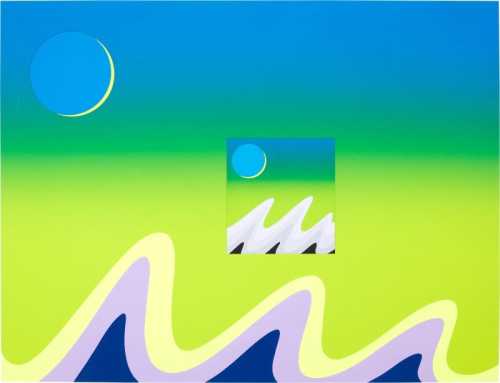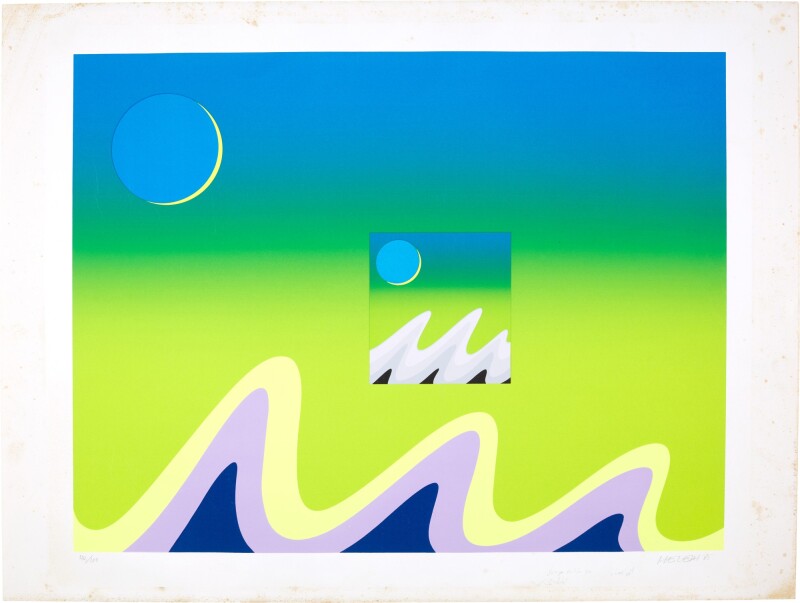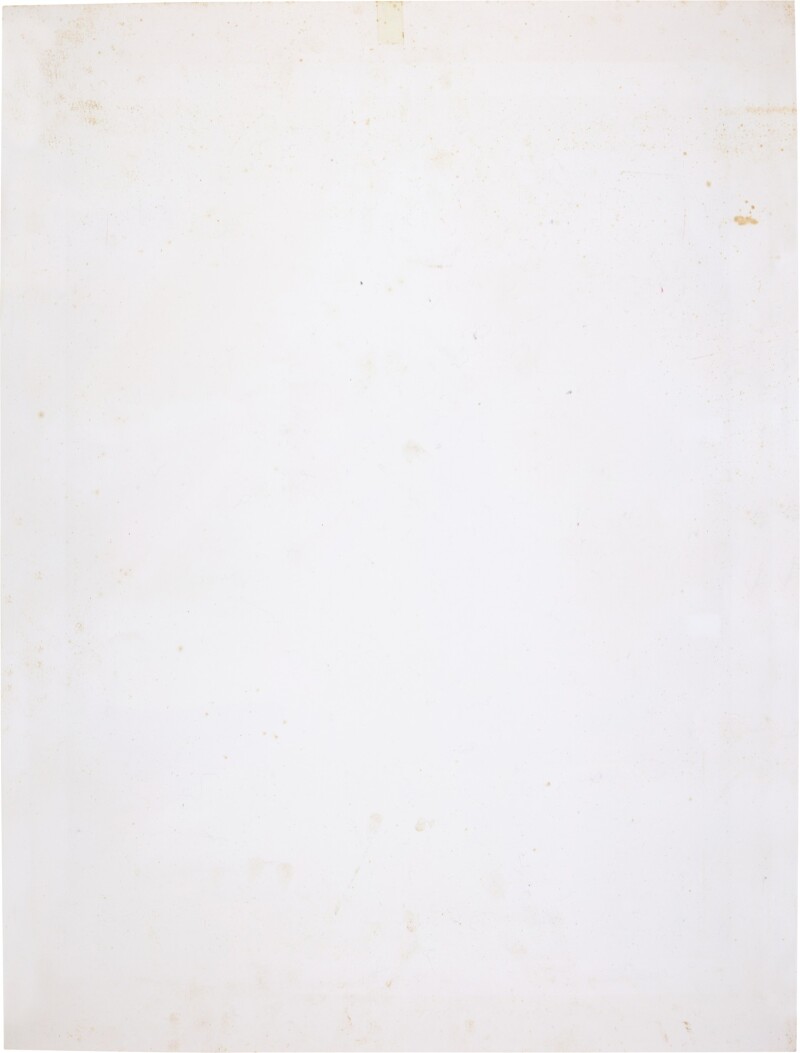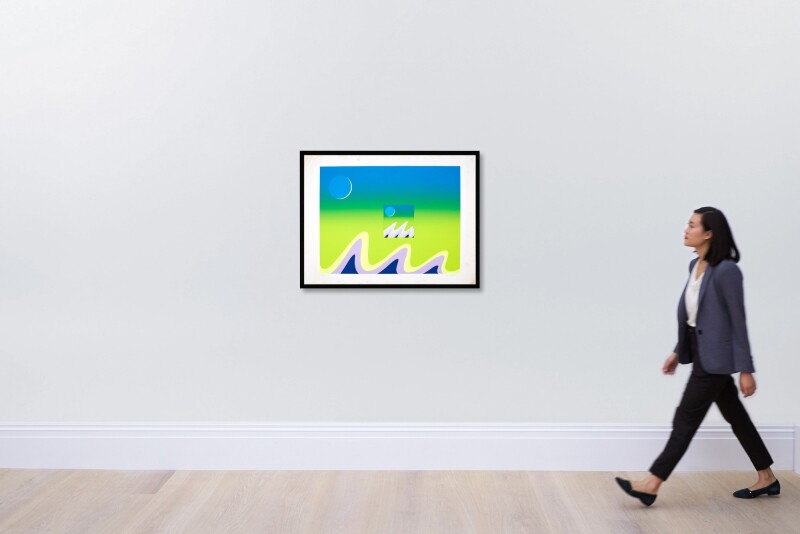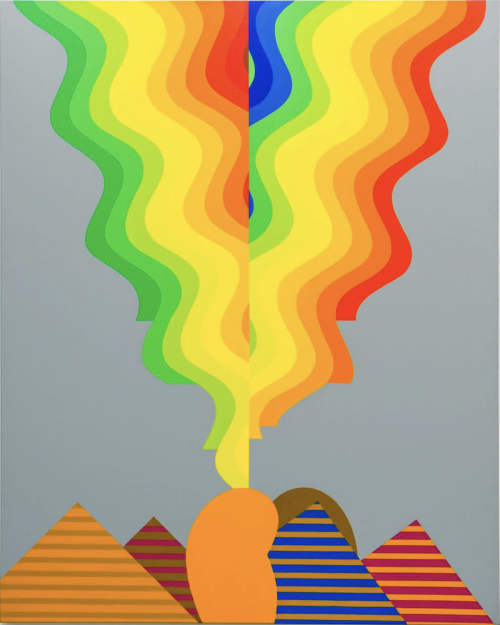- Untitled 1985
- لیتوگرافی روی کاغذ
- 79.6 * 59.8 cm
- Editions: 100
- Edition No. 42
- Signed and dated '85Framed: 75.3 by 90.7 cm. 29½ by 35½ in.This work is number 42 from an edition of 100.
23 March 2022
Estimation
£10,000
13,184 USD
-
£15,000
19,776 USD
Unsold
Artwork Description
From the 1970s, Melehi starts imposing new exigences on his work, and he spends the following decades researching innovative methods of representation. The present lot is characteristic of the latest shift in this undertaking, exhibiting an aesthetic between figuration and abstraction.
The way Melehi’s iconic waves are articulated here is revealing of the new personal and political symbolism that inspires the artist. At the bottom, a wave of yellow and purple stripes seems to overflow from the painted frame, evocative of the solar star on a gradient, dusk like background. On the top left corner, in smaller proportions creating a sense of distance, a stylized moon crescent levitates in the sky within a blue orb. Adding to the unconventionality of the composition, is its replica within a smaller frame, located in the centre of the painting. This mise en abyme acts like a window within the sky and points at the infiniteness of the universe. This assemblage of elements is suggestive of cosmic relations, like many other works of Melehi’s from the 1980’s. Together, they symbolize an impossible interplay between earth and heaven, or fire and water, alluding to new possibilities for transnational solidarities and identities.
In associating the crescent moon to purely abstract and varied waves, Melehi achieves an unusual balance between abstraction and representation, while effectively giving an illusion of depth to the work. This feat can be considered as the artist’s post-modern response to the Abstract Expressionist movement, to which he was greatly exposed in New York. The simplicity of this creation and the contemplative state it inspires is reminiscent of colour field painting, as employed by Mark Rothko, Barnett Newman and Clyfford Still. Besides, the strength conveyed by each motif and their apparent haphazard arrangement holds something of Jackson Pollock and Willem de Kooning’s action painting. These techniques are skilfully incorporated in a Bauhaus aesthetic, featuring simple geometric shapes in elaborate compositions. Yet, while these certainly showed new possibilities to the artist, nothing in Melehi’s work seems left to chance or improvisation. In particular, his emphasis on the moon crescent is symbolic of the mission he led alongside Mohamed Ataallah and Mohammed Chabaa, of reclaiming the graphism and spatialization of their own cultural references and identifiers. The symbol is repeated in many of Meheli’s artworks, in varying colours and backgrounds, just like it is on the national flags of many Islamic countries.
Bibliography:
Mohamed Melehi in conversation with Morad Montazami at The Mosaic Rooms, London, 6 June 2019, http://www.thirdtext.org/melehi-montazami
More lots by Mohammed Melehi
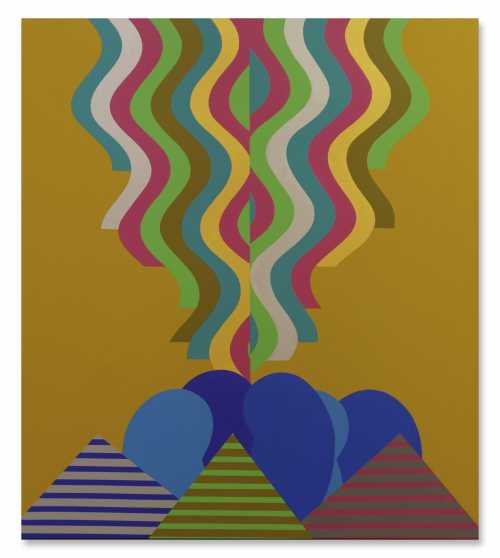
Untitled
Estimation
£40,000
55,579 USD
-
£60,000
83,368 USD
Sale Date
Christie's
-
24 June 2021
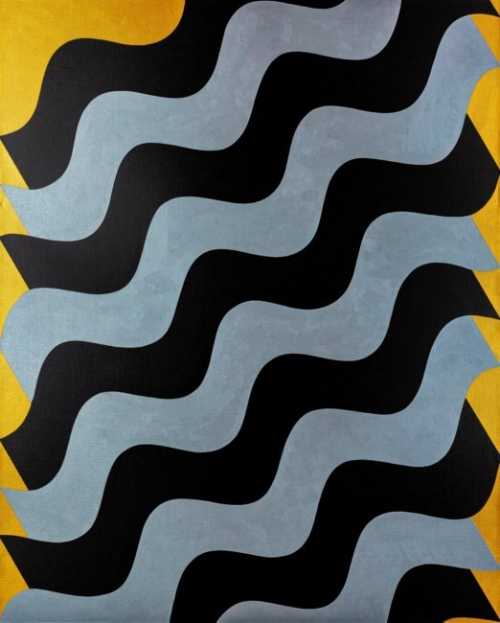
Moucharabieh, Gray on Black
Realized Price
62,914 USD
Min Estimate
34,349 USD
Max Estimate
50,963 USD
Average Artwork Worth
+38.211%
Average Growth of Artwork Worth
Sales Performance Against Estimates
Average & Median Sold Lot Value
2020 - 2024
Performance vs. Estimate
2020 - 2024
Sell-through Rate
2020 - 2024
Similar Artworks
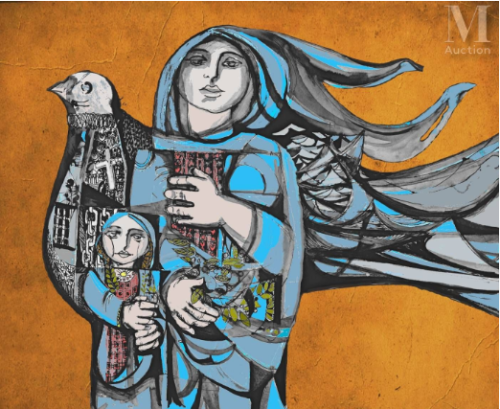
Solidarity no.7
Estimation
€500
542 USD
-
€800
867 USD
Sale Date
Millon & Associés
-
17 October 2024
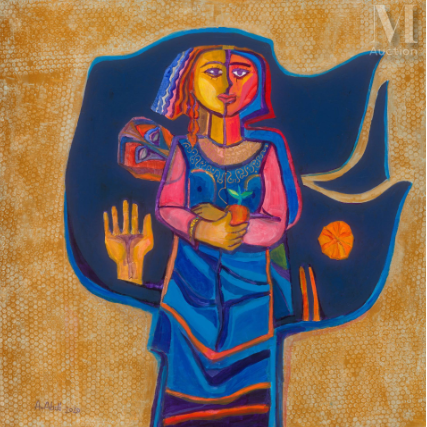
The Pessoptimist
Estimation
€500
542 USD
-
€800
867 USD
Sale Date
Millon & Associés
-
17 October 2024
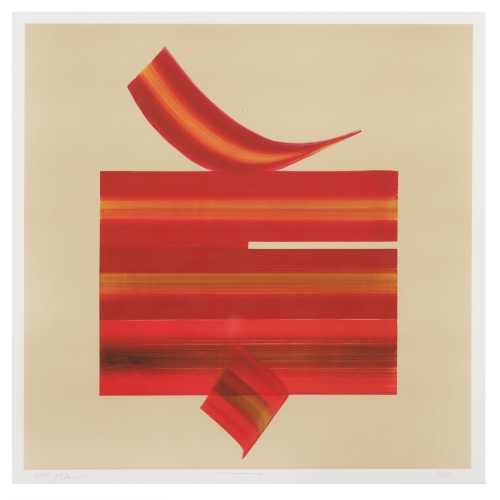
Hob (Love)
Estimation
£1,000
1,316 USD
-
£2,000
2,632 USD
Realized Price
£425
559 USD
71.667%
Sale Date
Chiswick Auction
-
31 March 2022
